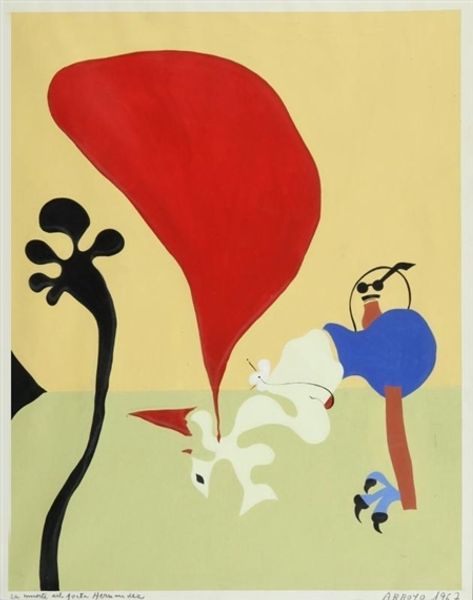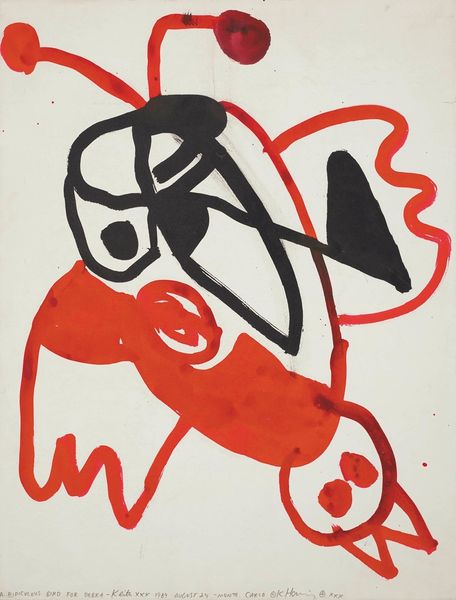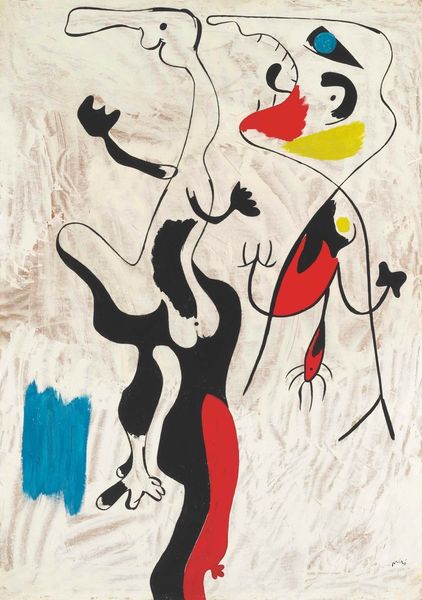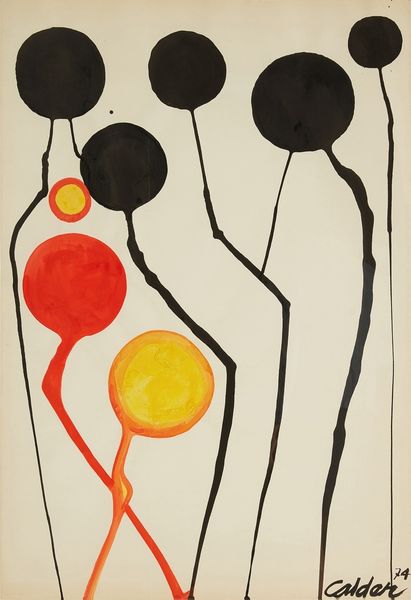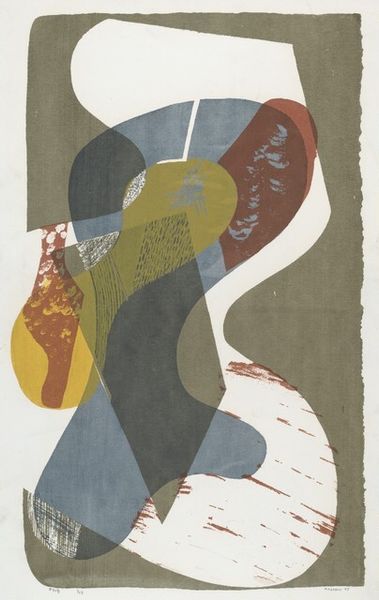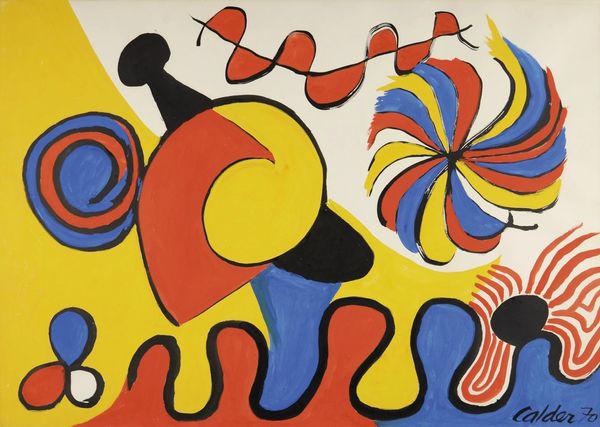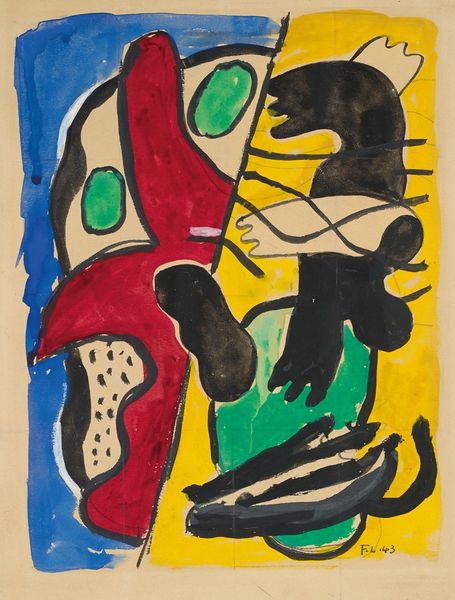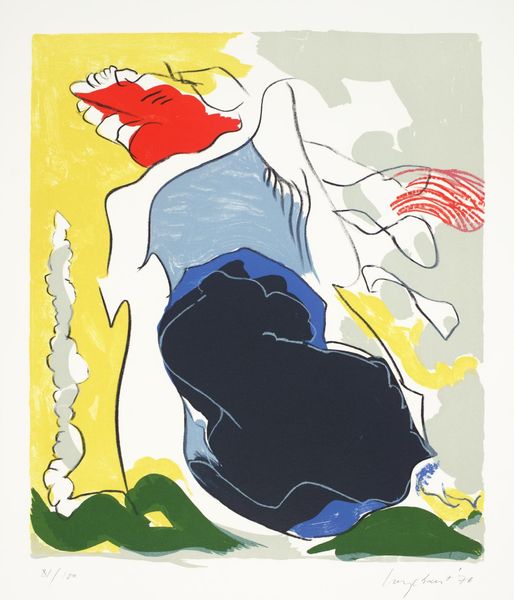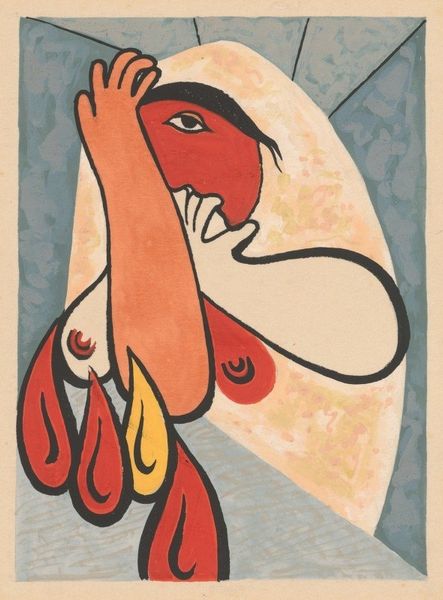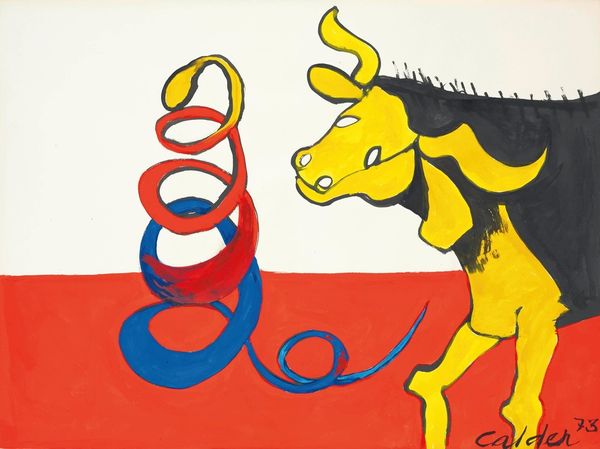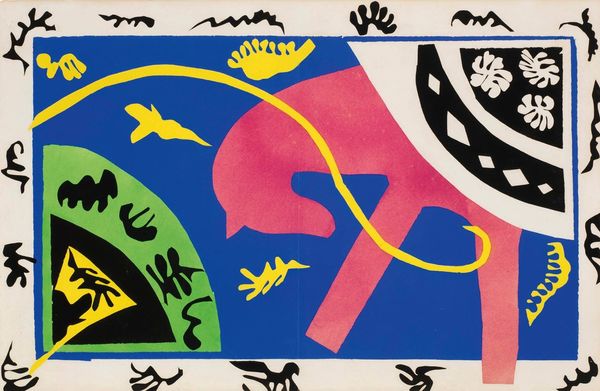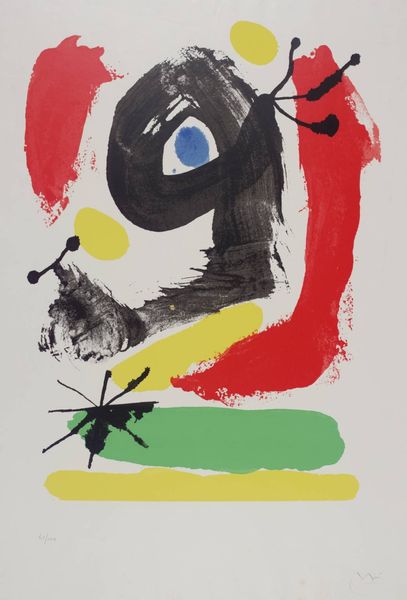
painting
#
organic
#
painting
#
figuration
#
abstract
#
abstraction
#
surrealism
Copyright: Modern Artists: Artvee
Curator: This is Joan Miró's 1936 piece, "FEMME ET CHIEN DEVANT LA LUNE." The biomorphic forms are typical of his abstract surrealist style, aren't they? Editor: Immediately, I’m struck by the contrast. It's simultaneously playful and unsettling. The bright primary colors give it a childlike feel, but those fragmented shapes create a sense of unease. Curator: That's a powerful observation. The juxtaposition you noted becomes even more charged when we consider the political climate of 1936 Spain. This piece emerges at a time of escalating social and political turmoil, right before the outbreak of the Spanish Civil War. Editor: Ah, context is key. So, are you saying that what looks like whimsical abstraction is, in fact, a veiled commentary on the anxieties and instabilities of the era? That those distorted forms are figures disfigured by fear? Curator: Precisely! The 'femme' and 'chien', while seemingly benign, are rendered as unstable, almost monstrous forms. Their presence before the moon—traditionally a symbol of mystery—suggests a disruption of natural order. Miró created this during his "savage paintings" period as some critics dubbed it. A direct response, using dreamlike imagery to explore a world on the brink of chaos. Editor: It makes you wonder about Miró's intentions in representing women. Does this distorting reflect societal anxieties about women's changing roles? The surrealists did tend to fixate, even fetishize female forms, didn’t they? I'm wondering where she finds herself here. Curator: I agree. The gendered lens is worth examining here. The painting might not be celebratory, but instead critical commentary. Let's look closely and analyze where her form is broken apart—or being rebuilt. And whether she is actively in partnership with this dog, or being menaced. It pushes us to ask difficult questions. Editor: A vital point. This reframing challenges a solely aesthetic appreciation and forces a consideration of identity, gender dynamics, and how these pieces reflect historical moments. What begins as play ends as an inquiry, unsettling, indeed. Curator: Exactly. These seemingly simple forms open into broader, complicated questions that reveal to us how urgent abstract art could be in unsettling times, just as it still offers today.
Comments
No comments
Be the first to comment and join the conversation on the ultimate creative platform.
